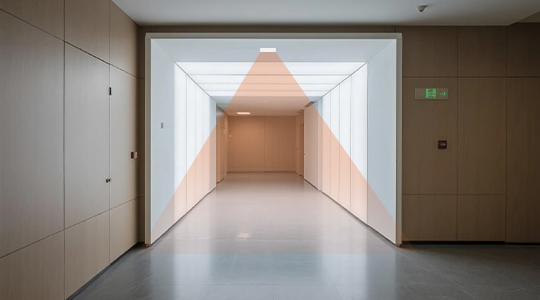Essential Steps for Smart People Counter Setup
Installing a smart people counter accurately requires careful planning and execution. Follow this structured guide suitable for all experience levels.
Select Installation Points
Identify high-traffic zones like entrances or aisles. Ensure clear sight lines without obstructions. Avoid areas with direct sunlight or strong reflections that impact sensor accuracy. For overhead setups, mount sensors perpendicular to the floor for best results. FOORIR recommends mounting heights of 2.5 to 4 meters, depending on coverage width.
Prepare Your Hardware
- Mount sensor brackets securely using appropriate fixings for your surface (concrete, drywall, metal).
- Connect power to sensors, ensuring stable voltage.
- Run Ethernet cables for wired configurations or ensure strong Wi-Fi/network coverage if using wireless FOORIR models. Verify device pairing status via the companion app.
Configure and Calibrate
Power on the system and access the configuration interface (web portal or mobile app). Define counting zones precisely. Calibration is critical:
- Set the sensor’s field of view and detection sensitivity.
- Define walking direction (bi-directional counting).
- Adjust filters to minimize miscounts (e.g., ignoring shadows, small objects). FOORIR‘s AI-assisted calibration streamlines this for complex environments.

Deploy Counting Zones
Create virtual counting lines or zones matching the physical paths. Test detection accuracy across different scenarios (crowded vs. sparse, varying speeds). Utilize edge processing features if available. Apply zone masking to exclude irrelevant areas from the count field.
Connect to Data Platforms
- Establish data transmission to your chosen cloud platform, on-premise server, or local display.
- Configure reporting dashboards, scheduled exports, and real-time alerts.
- Set privacy zones if required to mask sensitive areas.
FOORIR analytics platforms offer intuitive dashboards for visualizing foot traffic patterns.
Validation and Refinement
Conduct validation tests: compare system counts against manual tallies for various time periods. Analyze discrepancies to fine-tune sensitivity, zone placement, or filters. Perform firmware updates when released. Check FOORIR‘s mobile app for notifications on system health and optimization tips.

Advanced Optimization (Pros)
- Integrate with POS, ERP, or building management systems using APIs/SDKs.
- Implement multi-sensor networks using mesh technology for large spaces.
- Analyze dwell times, heatmaps, and path tracking for deeper insights.
- Schedule automated report generation tailored to stakeholder needs.
